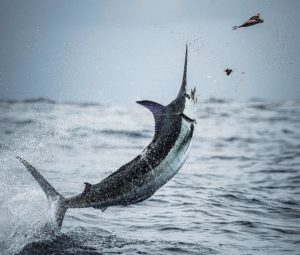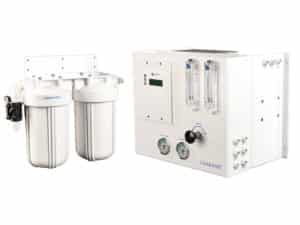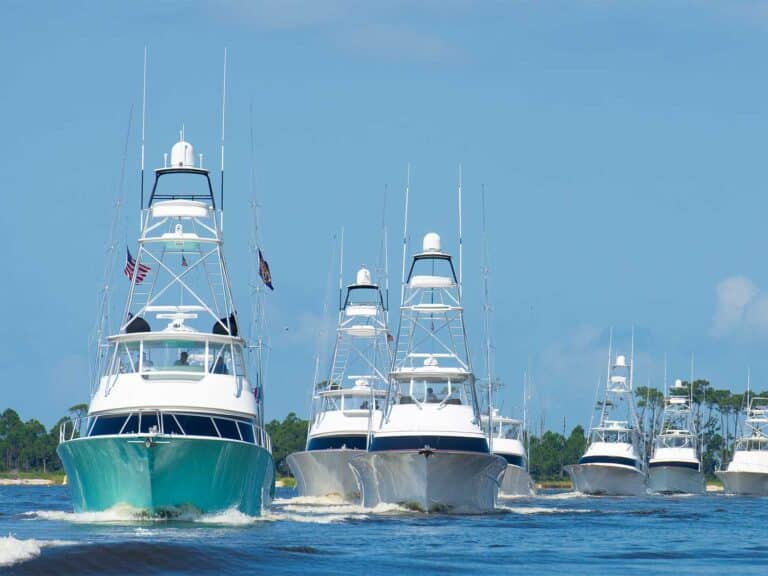
Peter Wright Headshot
Those of you with cars or boats will appreciate a joke I heard recently: “My wife kept complaining that I never took her anywhere expensive, so I took her to the gas station to fill up the truck.” The ever-rising prices of diesel fuel and gasoline have had a huge impact on charter-boat fleets around the world. The charter fleets in many fishing communities continue to shrink dramatically as fuel prices become the straw that broke the owner/operator’s back.
It has become difficult — some say almost impossible — for an owner to charge enough to cover haul-out fees, boat maintenance and repairs, dockage and crew’s wages, plus enough to make it worth the operator’s time and effort, and still get charters to pay enough to make it all work.
The additional fuel expense also leads many successful operators to change their tactics. From Australia to Cape Verde to Hawaii, many, if not most, captains are trolling to the marlin grounds, instead of running at cruising speed. It takes longer but saves on the fuel bill.
That option is not open to boats fishing single-day trips in the mid-Atlantic, Gulf of Mexico or other areas around the world where the long runs are needed. When you have to travel 80-plus miles one way, just getting out to the grounds and back represents your single biggest operating cost.
The need to catch bait is of paramount importance to the Aussie fleet on the Great Barrier Reef. But even so, some captains there now troll, instead of run, from one prolific bait spot to another, and hopefully catch a few large baits — tuna, mackerel or bonito — along the way. Again, saving fuel allows the captain to keep his daily charter fee down to a price that does not run off all of his clients.
However, always going at trolling speed, even though using lures lets him cover more ground than trolling dead bait, still restricts the captain’s ability to move around if the fish are not biting in a particular spot. Even if he gets good information, via cell phone or secret channel, of a good bite somewhere else, the skipper is still limited by how long it would take to get to where the fish have been found, fish there, and still get back to port at a decent hour. Carrying excessive amounts of fuel also raises costs — simply due to the weight and gear required to carry more fuel around!
Over the past several years, I’ve given prospective clients a daily charter rate with a “plus fuel” addition. By doing this, I was able to keep my fee low, and the threat of an additional cost wouldn’t keep me from making a move if I thought we could run to a good bite and save a day’s travel time.
A daily fee, plus expenses, was the standard arrangement back in the heyday of the Bahamas’ bluefin tuna fishery, when the tuna still poured past Bimini in Cat Cay in droves. The major determining factor was weather. If it was going to be windy, it was a good day; if there was no wind or current, it was usually bad. On really calm days, the tournament was canceled.
On the rough days with lots of fish around, your bait bill could spiral to several hundred dollars. Barracuda and other toothy bait stealers were despised — on a perfect pass, the bait they stole not only cost you a bite from a tuna, but each bait set you back between $5 and $8!
Using 50 to 80 baits a day was not uncommon, nor were the four- or five-bait days when conditions turned flat calm and no tuna were showing. There was no equitable “average” cost.
When fishing on a “plus fuel” basis, I often have to consult my anglers on whether or not they want me to run to another spot. If I think there’s a decent chance to get a bite on the way to the hot spot, I may quit dead-bait fishing and troll high-speed lures. (I get plenty of marlin, wahoo and tuna bites at 17 knots but have never had one at 20 knots.)
It’s always nice to find your own group of fish and have it all to yourself, but oftentimes you just have to move to get to better fishing! I explain the situation to my anglers and let them know that although I can’t be 100 percent certain, my suggestion is for them to suffer the extra cost and get to the action as soon as possible. They often tell me something like “We didn’t come all this way and pay this much money to save fuel! Do what you think is best.”
Running doesn’t always turn out to be a good idea, especially if you can’t go until the next day. Blue and black marlin can travel long distances quickly — and do so more frequently than sailfish.
A partial exception to this rule is when bait has been aggregating on a distinct geographic or bathymetric location. Leaving a rig that is not holding bait for one that you have been told is holding schools of little tuna is sometimes a great idea.







